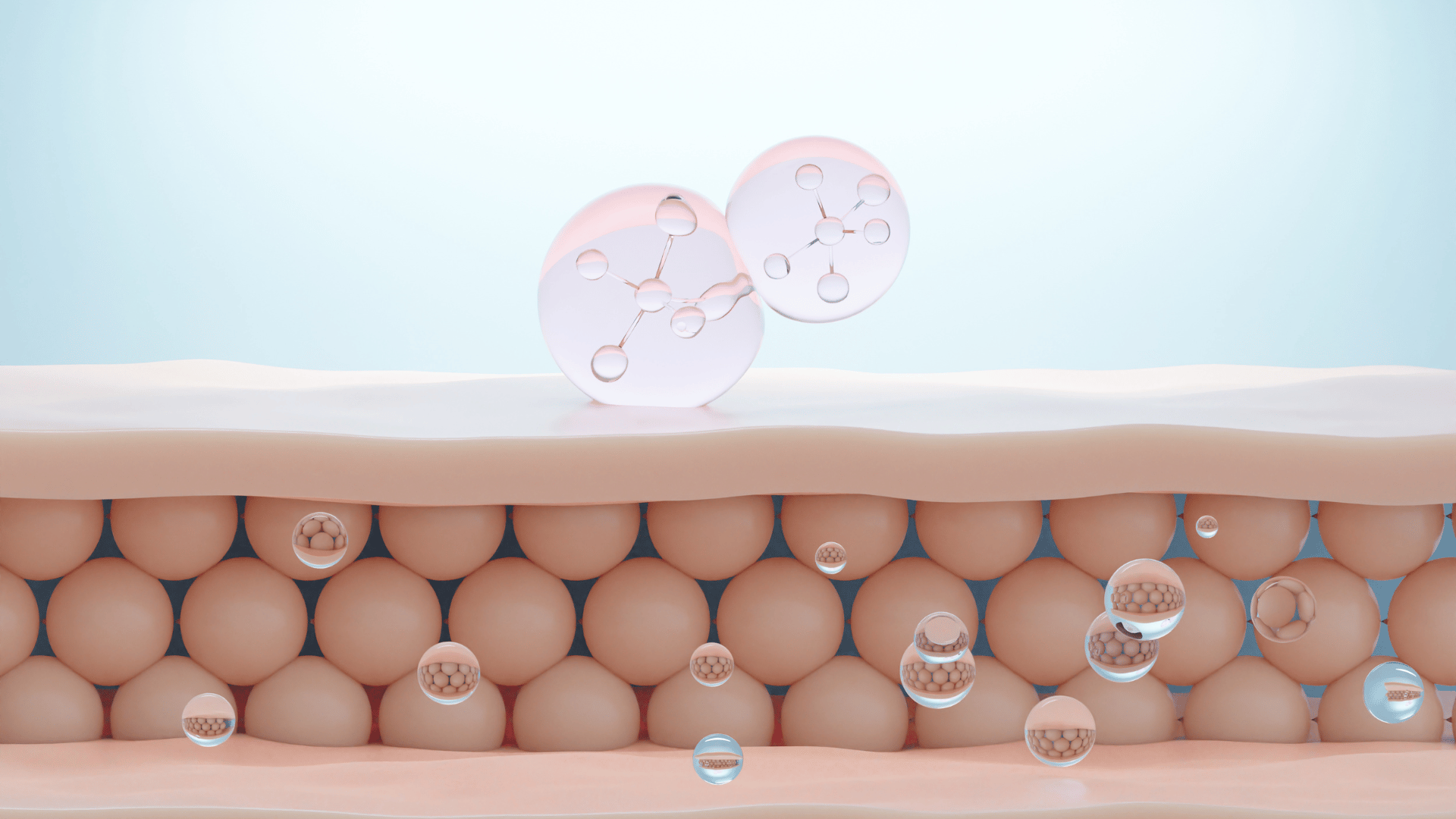When it comes to skincare and cosmetics, there can be a common misconception that “deeper is better” – the deeper the product soaks into my skin, the more effectively the product is going to perform. This is different from customers expecting a lotion to “rub in” quickly and has more to do with how cosmetic ingredients penetrate the skin to different levels, depending on several factors.
Molecular size comes into play, as larger molecules are generally less likely to penetrate the skin barrier. Water-soluble substances are generally less likely to penetrate the lipid-rich environment of the skin. Higher concentrations of an active ingredient increase the driving force for penetration but do not always guarantee increased absorption. Longer exposure times can result in higher absorption rates. Some areas of the skin are more permeable than others (e.g., the skin on the face is generally more permeable than that on the soles of the feet).
The belief that the deeper a skincare ingredient can penetrate the skin, the more effective it will be – this is not necessarily true. Our skin is a complex organ and it’s designed as a protective barrier. It keeps harmful substances out, and essential fluids in. There is some back and forth (sweat, etc.) but for the most part, it does its job well. This can lead to confusion for formulators because there are a class of cosmetic additives which act as dermal penetration enhancers. Through a variety of mechanisms, they help ingredients in a skin product sink deeper into the skin than they might otherwise be able to reach. A simple example is ethanol, or drinking alcohol, but there is a wide range of additives for this purpose.
Most skincare products are formulated to interact with the epidermis, with some specialized ingredients designed to reach the dermis. However, reaching too deep could lead to skin irritations or even systemic absorption into your bloodstream.
The take home message: deeper isn’t always better!
When certain ingredients penetrate too deeply, they can cause inflammation, irritation, or allergic reactions. Glycolic acid, a popular alpha-hydroxy acid, is a perfect example. Its molecular shape is small, allowing it to penetrate deeply into the skin. It’s already a powerful ingredient that needs restraint and caution. It’s not something that everyone can handle at full strength, certainly not every day. It can lead to skin damage from overuse. Can you imagine the redness and inflammation if we used a penetration enhancer with glycolic acid? If we dissolved glycolic acid in ethanol and applied it to our skin, the glycolic acid would push down deep and lead to problems.
To some degree, we need to learn to trust our skin. Our skin has its own natural process of shedding and regeneration. Pushing ingredients too deeply can disrupt this process and damage the skin barrier, making your skin more vulnerable to environmental factors like UV rays and pollution. Some ingredients are not meant to enter your bloodstream. For example, certain synthetic colors and fragrances are safe for topical application but could pose risks if they reach deeper layers of skin and enter the bloodstream. Some ingredients, like moisturizing agents and emollients, are designed to sit on the skin’s surface to lock in moisture. Pushing them deeper into the skin would render them ineffective.
In the realm of cosmetics and skincare, it’s not about how deep an ingredient can go, but rather about how well it performs its intended function at the appropriate depth. If a hydrating ingredient sits on your skin’s surface and locks in moisture, then it has done its job well. If an anti-aging ingredient works effectively in the dermis without causing irritation, then it’s successful as well.
However! Very occasionally, we do want an ingredient to penetrate slightly more deeply. Depending on the structure of the molecule, simply applying it to your skin is not always enough. As we’ve mentioned, your skin is a complex biological barrier designed to protect you from environmental factors like pollutants, bacteria, and excessive moisture loss. It consists of various layers, with the outermost layer being the stratum corneum, a kind of ‘brick-and-mortar’ structure that makes it challenging for many compounds to cross.
In a nutshell, the problem is like trying to get a basketball through a chain-link fence: some smaller balls (molecules) might go through, but the bigger ones get stuck. So, how do you make your expensive anti-aging serum or medicinal ointment penetrate deeper into the skin to do its job? Enter the world of dermal penetration additives.
Dermal penetration additives, or penetration enhancers, are compounds designed to facilitate the transport of active ingredients through the skin’s protective barrier into the deeper layers where they can exert their effects. It’s like greasing the chain-link fence so that even the basketball can pass through.
These enhancers work by either:
Disrupting the ‘Bricks’: They interact with the skin cells, temporarily changing their structure to allow compounds to pass through.
Manipulating the ‘Mortar’: They target the lipids (fats) that hold the skin cells together, making them more fluid so that substances can slip past.
Carrier Systems: Some use nanotechnology to create tiny ‘vehicles’ that can carry active ingredients deep into the skin.
Out of the many different products I’ve designed in my career, <1% needed a “penetration enhancer” to achieve good results. This blog entry is more of a cautionary tale than a guide to using these materials, and I think that’s appropriate. I always urge restraint in cosmetic formulation. Customers put their trust in us to provide them with healthy products that won’t cause their skin to have issues. Use caution with dermal penetration additives, especially if you’re not well-versed in the toxicology of the materials involved. Happy formulating out there!
a

